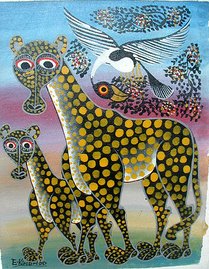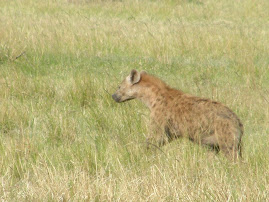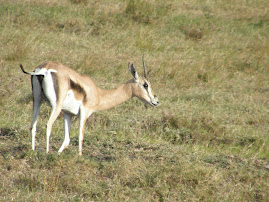OzzieFact:
Geologically, the creation of Uluru and Kata Tjuta were the result of the tectonic movement of the continent away from the Indo-Asian continent and Australia's subsequent travel northward. Western Australia once had soaring peaks, similar to the Himalayas. The rocks in Western Australia are geologically identical, in composition and age, to those of the Himalayas. Erosion took a far greater toll on the Aussie west than on northern India, especially since the Himalayas are even today continuing to be pushed upwards by tectonic movement.
Australia was once covered by an inland sea, but as it separated and began moving northward, it, too, experienced a "pushing up" of the land in the center of the continent. This caused the inland sea to drain. As it did so, there were a few low places or "bowls" into which various sediments were deposited. At the Kata Tjuta site, the heavier boulders and rocks were deposited. At Uluru, the sands. These sites continued to be overlaid with additional and similar material until it all was eventually covered with a huge layer of sediment. Over time, this sediment compressed the underlayments until each site congealed into a conglomerate rock (Kata Tjuta) and a solid rock (Uluru). The covering sediment was worn off or blown away, and the upward push of the land caused the rock at both sites to be thrust above the plains. Uluru was so large and so heavy that it fell onto its side. Geological investigation has proved that Uluru is like an iceberg in that only about 10% of it is exposed.
You can see by the right-hand picture how Kata Tjuta is really conglomerate rock.


And as you can see, Uluru is much more solid, though pock-marked with caves and eroded portions.


This erosion of the Uluru rock face is referred to as "honeycomb erosion," and is sacred to the local people (but we are permitted to photograph it - mainly because it is unavoidable.). It represents an Aboriginal man's face, with his hair flowing out behind his head, which is facing left. The second picture is of the climbing face of Uluru. I chose not to climb, respecting the wishes of the local people.





























No comments:
Post a Comment